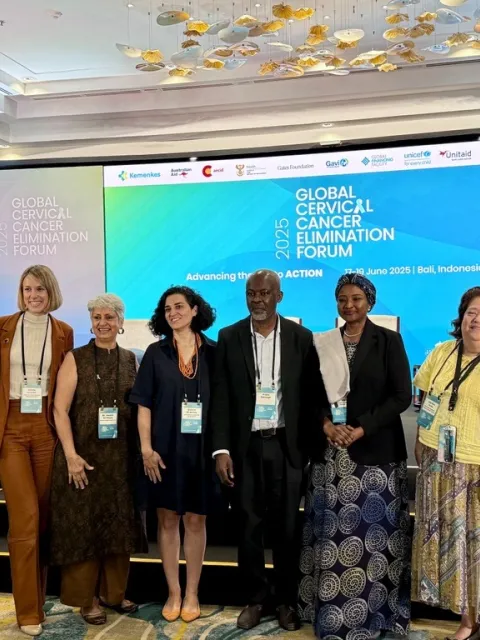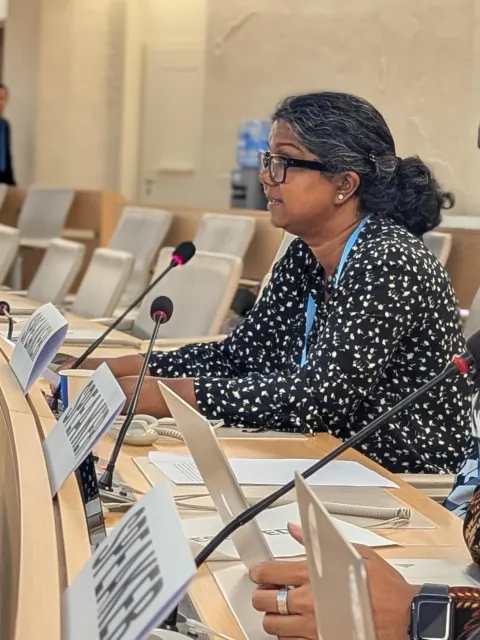A historic milestone in the global movement to eliminate cervical cancer
WHO’s Global Strategy for the elimination of cervical cancer marks an unprecedented move to mobilise the international health community and ensure that future generations of women do not die from a preventable cancer.

WHO adopts the Global Strategy towards the elimination of cervical cancer
Every two minutes a woman’s life is lost to cervical cancer. It is the leading cause of cancer deaths in women in 42 countries and remains the fourth most common cause of cancer among women globally.
As most cases are caused by the human papillomavirus (HPV), however, cervical cancer can be successfully prevented through HPV vaccination of girls and as well as boys (aged generally 11-12 years). Cervical screening further allows for the early diagnosis and treatment of pre-cancerous lesions. These measures form the foundation of the Global Strategy’s approach to elimination, along with the prompt referral for treatment and palliative care in cases of invasive cervical cancer.
“So many women should not be dying from this disease. We have the tools to eliminate cervical cancer within a few generations! Thankfully, WHO’s Global Strategy should help harness the high degree of political and social commitment necessary to ensure effective access to vaccines and screenings for all women, and to overcome the gender discrimination and stigma that are strong barriers to implementation.”
- HRH Princess Dina Mired of Jordan, President of UICC
The Global Strategy for the elimination of cervical cancer as a public health problem aims for all UN Member States to lower the annual incidence of cervical cancer to 4 cases per 100,000. The strategy also sets aspirational goals as well as short-term “90:70:90” targets for 2030: 90% coverage of HPV vaccination of girls (by 15 years of age), 70% coverage of screening with a high-performance HPV test (between the ages of 35 and 45 years) and 90% treatment of precancerous lesions and management of 90% of invasive cancer cases.
Achieving these objectives will require, in particular, bridging the inequity gap between high and lower-income countries, who bear the brunt of the burden of this disease. Low- and middle-income countries account for some 90% of cervical cancer deaths, and the global strategy underscores an international commitment to ensure that vaccination, screening and treatment services are widely established and scaled up.
“It is almost impossible to overstate the importance of this global strategy. This is not merely aspirational but a truly realistic goal. For the first time in history, the world could see the elimination not only of a cancer but of a non-communicable disease. UICC has worked for more than two years to support WHO’s efforts to conceive, draft and present the strategy, and is now eager to continue working with its members on its implementation in their countries.”
- Dr Cary Adams, CEO of UICC
WHO Member States adopted the strategy alongside other health resolutions as part of the silence procedure launched after the recent World Health Assembly held virtually in May 2020. The adoption sends a strong signal of worldwide interest in progressing on an essential public health issue even amidst the coronavirus pandemic.
Last update
Monday 05 December 2022
